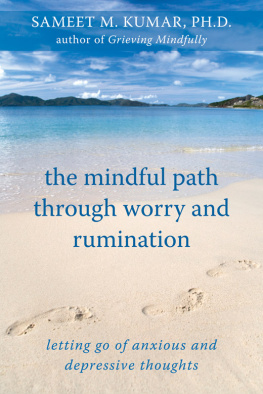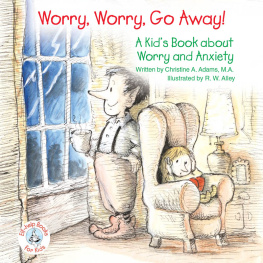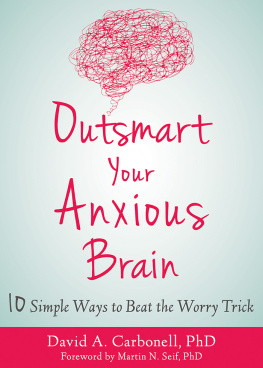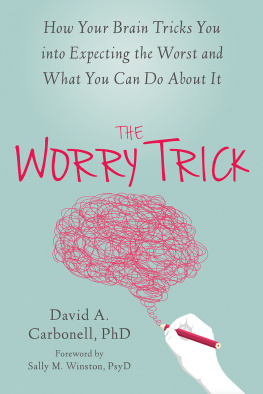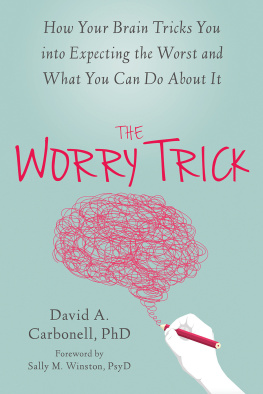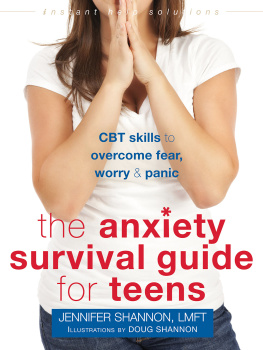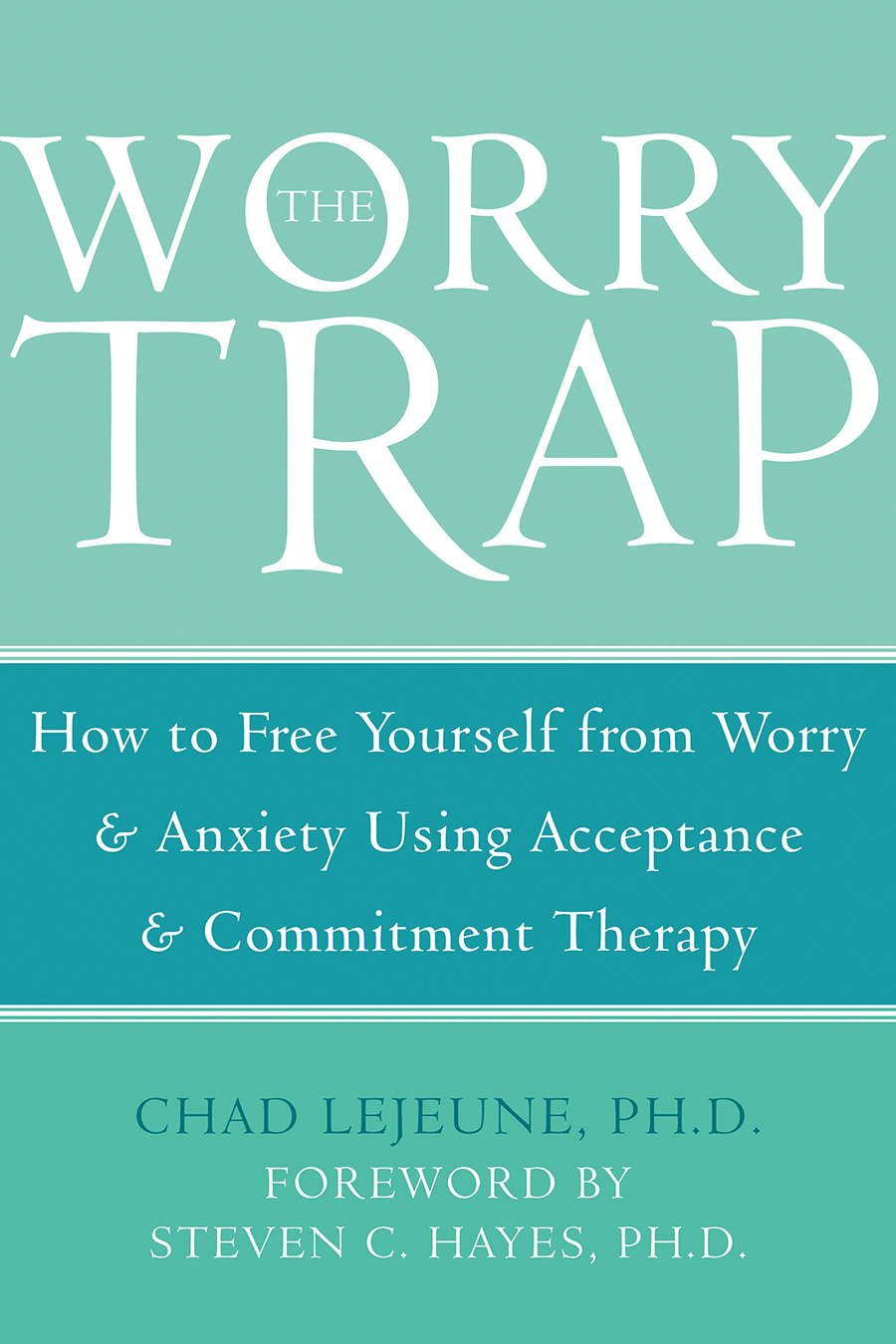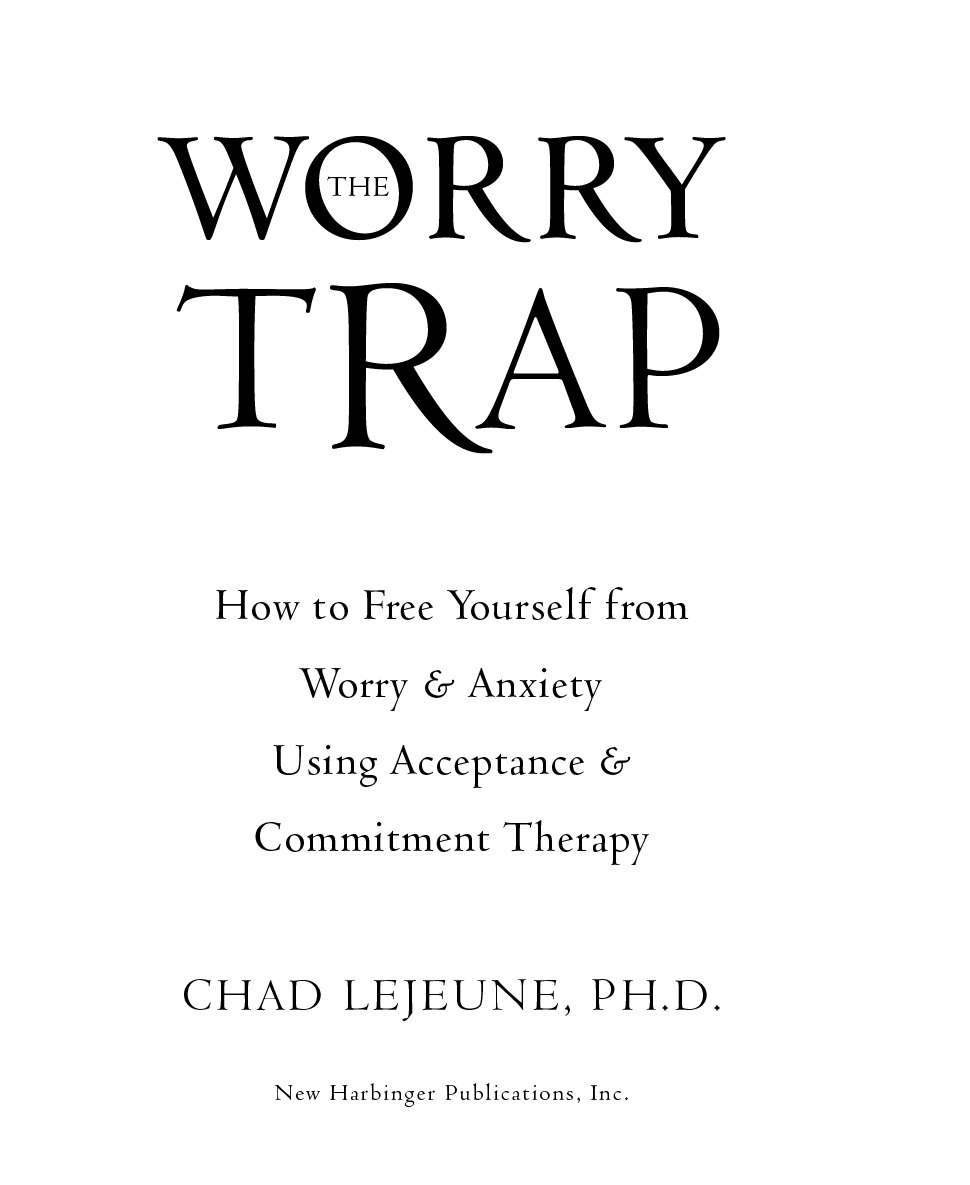Chad LeJeune - The Worry Trap: How to Free Yourself from Worry & Anxiety using Acceptance and Commitment Therapy
Here you can read online Chad LeJeune - The Worry Trap: How to Free Yourself from Worry & Anxiety using Acceptance and Commitment Therapy full text of the book (entire story) in english for free. Download pdf and epub, get meaning, cover and reviews about this ebook. year: 2007, publisher: New Harbinger Publications, genre: Religion. Description of the work, (preface) as well as reviews are available. Best literature library LitArk.com created for fans of good reading and offers a wide selection of genres:
Romance novel
Science fiction
Adventure
Detective
Science
History
Home and family
Prose
Art
Politics
Computer
Non-fiction
Religion
Business
Children
Humor
Choose a favorite category and find really read worthwhile books. Enjoy immersion in the world of imagination, feel the emotions of the characters or learn something new for yourself, make an fascinating discovery.

- Book:The Worry Trap: How to Free Yourself from Worry & Anxiety using Acceptance and Commitment Therapy
- Author:
- Publisher:New Harbinger Publications
- Genre:
- Year:2007
- Rating:3 / 5
- Favourites:Add to favourites
- Your mark:
The Worry Trap: How to Free Yourself from Worry & Anxiety using Acceptance and Commitment Therapy: summary, description and annotation
We offer to read an annotation, description, summary or preface (depends on what the author of the book "The Worry Trap: How to Free Yourself from Worry & Anxiety using Acceptance and Commitment Therapy" wrote himself). If you haven't found the necessary information about the book — write in the comments, we will try to find it.
Do You Worry All the Time?
Have you tried to control your thoughts and get your worrying under control? Did it work? If it didnt, try this simple exercise: Take thirty seconds, right here and now, and dont think about something you recently worried about. Think about anything and everything else, but dont think about that worry.
How did you do? Like most of us, you probably could think of little else except whatever it was you worried about, no matter how hard you tried. This is the problem with trying to control your thoughts: Your attempts to stop worrying very often lead you to repeat and refresh the very worries youre trying to dispel.
Acceptance and commitment therapy (ACT), a revolutionary new approach to resolving a wide range of psychological problems, can help you break the cycle of chronic worry. ACT stresses letting go of your attempts to avoid, change, and get rid of worry. Instead, it shows you how to accept your feelings as they occur, without judgment. Youll learn to de-fuse from your worries, observing and then letting them go. Then youll explore and commit to acting on your values, thereby creating a rich life for yourself-even with the occasional worry.
Pragmatic, straightforward help from an astute and expert clinician; the author draws on cutting-edge research findings to help those who suffer from the age-old problem of worry.
-Jacqueline B. Persons, Ph.D., director of the San Francisco Bay Area Center for Cognitive Therapy and associate clinical professor in the Department of Psychology at the University of California, Berkeley
This should be a welcome and helpful book for anyone whose life is disrupted by worry. LeJeune offers a practical and informative approach for dealing with worry that places it squarely in the larger and wondrous context of ones whole life! The easy-to-follow mindfulness methods and acceptance practices open the door for real transformation to any reader who actually does them.
-Jeffrey Brantley, MD, director of the Mindfulness-Based Stress Reduction Program at Duke Universitys Center for Integrative Medicine and author of Calming Your Anxious Mind
Chad LeJeune: author's other books
Who wrote The Worry Trap: How to Free Yourself from Worry & Anxiety using Acceptance and Commitment Therapy? Find out the surname, the name of the author of the book and a list of all author's works by series.

